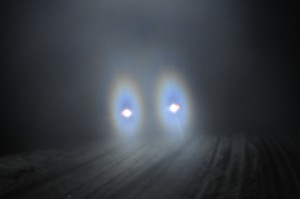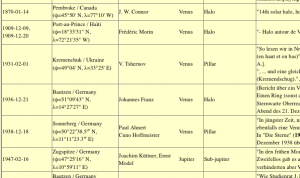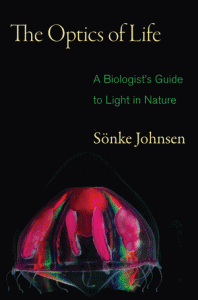Conference on “Light and Color in Nature”
August 5-8, 2013
Fairbanks, Alaska
Call for Papers
An International Conference on “Light and Color in Nature” will be held on August 5-8 at the University of Fairbanks, Alaska. The organizing committee is soliciting abstracts for talks at the conference. The topics addressed at the meeting include, but are not limited to, the following: rainbows; ice crystal halos; glories; coronas; iridescence; sky color;
atmospheric visibility; refraction effects; contrast phenomena; noctilucent clouds; optics of lightning; auroras; colors created by absorption and scattering in water and air; color and light in water and on water surfaces; iridescence and colors in biology and geology; atmospheric optics in history and archaeology; and computational techniques for calculating and rendering optical effects in the atmosphere and landscape.
For submission: please submit a 200-word abstract that includes title and author list (you also may include a color or gray-scale image that illustrates your topic). File formats accepted are plain text, pdf, doc, and docx. All accepted abstracts will be given as oral presentations. Abstracts may be submitted via email to optics.submissions@gmail.com. The deadline for abstract submission is Monday, April 15, 2013. The committee will review all abstracts and notify authors of acceptance by May.
Click here for registration … including options for submitting abstracts (if you , requesting travel assistance and/or reduced student registration rate).
Background
This will be the 11th in a series of Conferences held over the past 35 years:
1) “Meteorological Optics”, August 28-29, 1978, Keystone, Colorado
2) “Atmospheric Optics”, January 3-5, 1983, Incline Village, Nevada
3) “Meteorological Optics”, April 2-3, 1986, Honolulu, Hawaii
4) “Light & Color in the Open Air”, July 11-13, 1990, Washington, D.C.
5) “Light & Color in the Open Air”, June 16-18, 1993, State College, Pennsylvania
6) “Light & Color in the Open Air”, February 10-12, 1997, Santa Fe, New Mexico
7) “Meteorological Optics”, June 6-8, 2001, Boulder, Colorado
8) “Atmospheric/Meteorological Optics”, June 13-17, 2004, Bad Honnef, Germany
9) “Light & Color in Nature”, June 25-29, 2007, Bozeman, Montana
10) “Light & Color in Nature”, June 16-20, 2010, St. Mary’s City, Maryland
Applied Optics Feature Issue
Following each of the previous meetings, the Optical Society of America (OSA) has generously published a Feature Issue of one of its peer-reviewed journals. These Feature Issues draw heavily (but not exclusively) on contributions made at these meetings.
Journal of Optical Society of America, Vol. 69, No. 8 (August 1979)
Journal of Optical Society of America, Vol. 73, No. 12 (December 1983)
Journal of Optical Society of America A, Vol. 4, No. 3 (March 1987)
Applied Optics, Vol. 30, No. 24 (August 1991)
Applied Optics, Vol. 33, No. 21 (July 1994)
Applied Optics, Vol. 37, No. 9 (March 1998)
Applied Optics, Vol. 42, No. 3 (January 2003)
Applied Optics, Vol. 44, No. 27 (September 2005)
Applied Optics, Vol. 47, No. 34 (December 2008)
Applied Optics, Vol. 50, No. 28 (October 2011)
In line with this tradition, a Feature Issue of Applied Optics will be published during 2014.
Practical information
A dedicated web-site (http://lightandcolorinnature.org/2013-conference/) will be updated regularly to provide the latest information about the conference (e.g. accommodation, venue, schedule, etc.).


